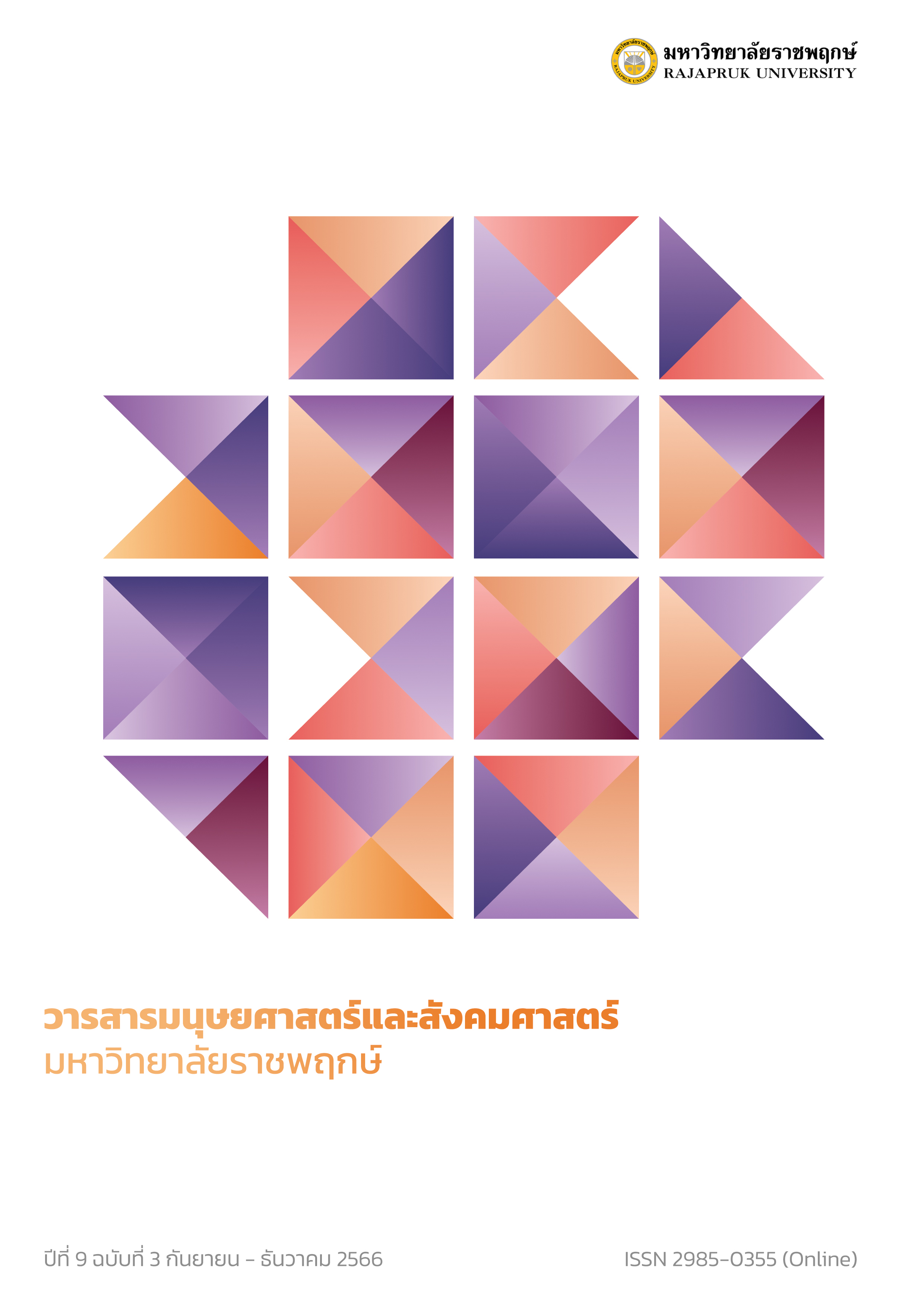The Development of Characteristics of being Social Media Influencers for High School Students
Main Article Content
Abstract
The objectives of this research were to 1) develop characteristics of being social media influencers for high school students and 2) assess characteristics of being social media influencers for high school students. The sample group was 13 high school students of Mathayomwatsing School who were interested in the characteristics of being social media influencers and applied to participate in the characteristics of being social media influencer activity. The research instrument was an interview form and an assessment form. The statistics used in the data analysis were mean and standard deviation.
The research findings were as follows: 1) The developing characteristics of being a social media influencer activity process are composed of six steps: 1. Get to know each other; 2. How to live life on social media?; 3. Ways of Influencer; 4. Workshop; 5. Sharing knowledge; and 6. Assessment of activities. 2) The assessment of characteristics of being social media influencers for high school students finds that: 1. After students participated in the developing characteristics of being social media influencer activity, they were self-assessed to possess the characteristics of being social media influencers at a high level. 2. After the students participated in the characteristics of being social media influencers activity, the researcher evaluated the students to have the characteristics of being social media influencers at the highest level.
Article Details
References
กระทรวงศึกษาธิการ. (2551). หลักสูตรแกนกลางการศึกษาขั้นพื้นฐาน พุทธศักราช 2551. กรุงเทพฯ: โรงพิมพ์ชุมนุมสหกรณ์การเกษตรแห่งประเทศไทย จํากัด.
ธีรพงศ์ ทับอินทร์. (2558). การใช้วงจรเดมมิ่ง (PDCA) ในการบริหารงานวิชาการของโรงเรียนมัธยมศึกษา สังกัดสำนักงานเขตพื้นที่การศึกษามัธยมศึกษา เขต 42. วารสารชุมชนวิจัย มหาวิทยาลัยราชภัฏนครราชสีมา, 9(2): 68-78.
ปิยวรรณ พันธุ์มงคล. (2552). บทบาทของบริบททางสังคมและวัฒนธรรมต่อการเรียนรู้ของเด็กตามแนวคิดของ Vygotsky. วารสารครุศาสตร์, 38(2): 79-87.
พยอม ศรีสมัย. (2551). ความสัมพันธ์ระหว่างความคิดวิจารณญาณ ความคิดสร้างสรรค์และความสามารถในการใช้กระบวนการทางวิทยาศาสตร์ในการแก้ปัญหาของนักเรียนชั้นมัธยมศึกษาปีที่ 3. วิทยานิพนธ์ ศึกษาศาสตรมหาบัณฑิต มหาวิทยาลัยสงขลานครินทร์.
พรรณี ชูทัย เจนจิต. (2528). จิตวิทยาการศึกษา. กรุงเทพฯ: อัมรินทร์การพิมพ์.
รัฐญา มหาสมุทร และ วรัชญ์ ครุจิต. (2559). กลยุทธ์การสื่อสารของผู้ทรงอิทธิพลทางความคิดในโลกออนไลน์ที่มีผลต่อทัศนคติของกลุ่มผู้ติดตาม. วารสารการสื่อสารและการจัดการ นิด้า, 2(1): 81-106.
โรงเรียนมัธยมวัดสิงห์. (2564). โรงเรียนมัธยมวัดสิงห์. ค้นเมื่อวันที่ 26 กรกฎาคม 2564, จาก https://www.mws.ac.th/mainmws/
วิชัย ดิสสระ. (2535). การพัฒนาหลักสูตรและการสอน. กรุงเทพฯ: สุวีริยาสาส์น.
ศักดิ์ไทย สุรกิจบวร. (2545). จิตวิทยาสังคม ทฤษฎีและปฏิบัติการ. พิมพ์ครั้งที่ 5. กรุงเทพฯ: สุวีริยาสาส์น.
อัจฉรา จุ้ยเจริญ. (2557). NLP ดีอย่างไร. ค้นเมื่อวันที่ 30 กรกฎาคม 2564, จาก https://www.posttoday.com/aec/news/291043
อาทิตยา อย่างอิ่น. (2564). การพัฒนากลยุทธ์การตลาดแบบผู้ทรงอิทธิพลระดับจุลภาคและความภักดีในตราสินค้ารองเท้าวิ่ง. สารนิพนธ์ การจัดการมหาบัณฑิต มหาวิทยาลัยมหิดล.
Eric Dahan. (2016). How Influencer Marketing Moves Beyond Raising Awareness. ค้นเมื่อวันที่ 21 กรกฎาคม 2564, จาก https://www.entrepreneur.com/article/269671
LifeEnricher. (2564). NLP คืออะไร? และเหมาะสำหรับใคร. ค้นเมื่อวันที่ 30 กรกฎาคม 2564, จากhttps://thelifeenricher.com/life-enricher-x-nlp-practitioner-triple-certification-program/
MindSpring. (2564). NLP คืออะไร?. ค้นเมื่อวันที่ 30 กรกฎาคม 2564, จาก https://www.mindspringconsulting.com/nlp-neuro-linguistic-program/

